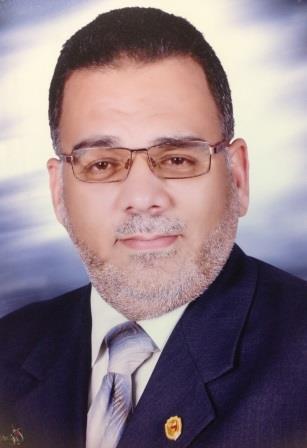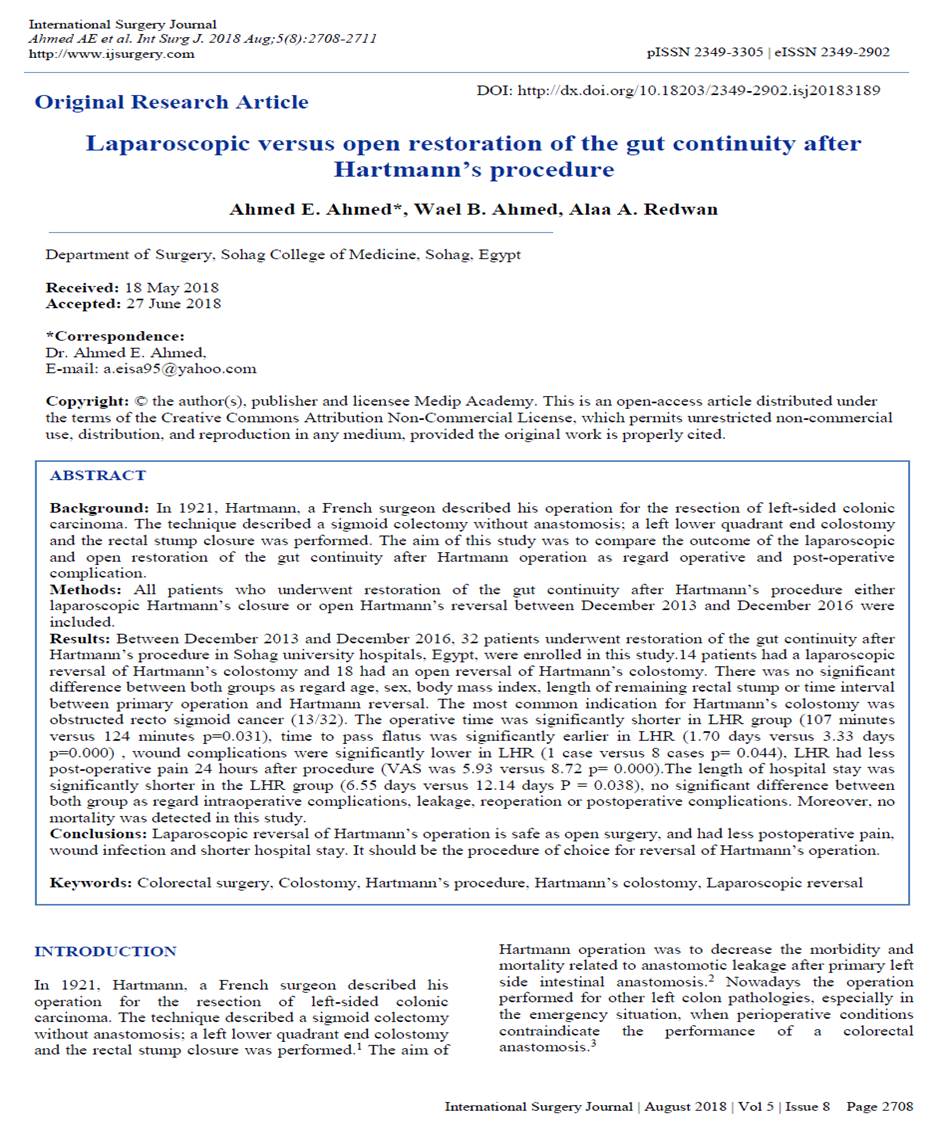ABSTRACT
Background: In 1921, Hartmann, a French surgeon described his operation for the resection of left-sided colonic carcinoma. The technique described a sigmoid colectomy without anastomosis; a left lower quadrant end colostomy and the rectal stump closure was performed. The aim of this study was to compare the outcome of the laparoscopic and open restoration of the gut continuity after Hartmann operation as regard operative and post-operative complication.
Methods: All patients who underwent restoration of the gut continuity after Hartmann’s procedure either laparoscopic Hartmann’s closure or open Hartmann’s reversal between December 2013 and December 2016 were included.
Results: Between December 2013 and December 2016, 32 patients underwent restoration of the gut continuity after Hartmann’s procedure in Sohag university hospitals, Egypt, were enrolled in this study.14 patients had a laparoscopic reversal of Hartmann’s colostomy and 18 had an open reversal of Hartmann’s colostomy. There was no significant difference between both groups as regard age, sex, body mass index, length of remaining rectal stump or time interval between primary operation and Hartmann reversal. The most common indication for Hartmann’s colostomy was obstructed recto sigmoid cancer (13/32). The operative time was significantly shorter in LHR group (107 minutes versus 124 minutes p=0.031), time to pass flatus was significantly earlier in LHR (1.70 days versus 3.33 days p=0.000) , wound complications were significantly lower in LHR (1 case versus 8 cases p= 0.044), LHR had less post-operative pain 24 hours after procedure (VAS was 5.93 versus 8.72 p= 0.000).The length of hospital stay was significantly shorter in the LHR group (6.55 days versus 12.14 days P = 0.038), no significant difference between both group as regard intraoperative complications, leakage, reoperation or postoperative complications. Moreover, no mortality was detected in this study.
Conclusions: Laparoscopic reversal of Hartmann’s operation is safe as open surgery, and had less postoperative pain, wound infection and shorter hospital stay. It should be the procedure of choice for reversal of Hartmann’s operation.


